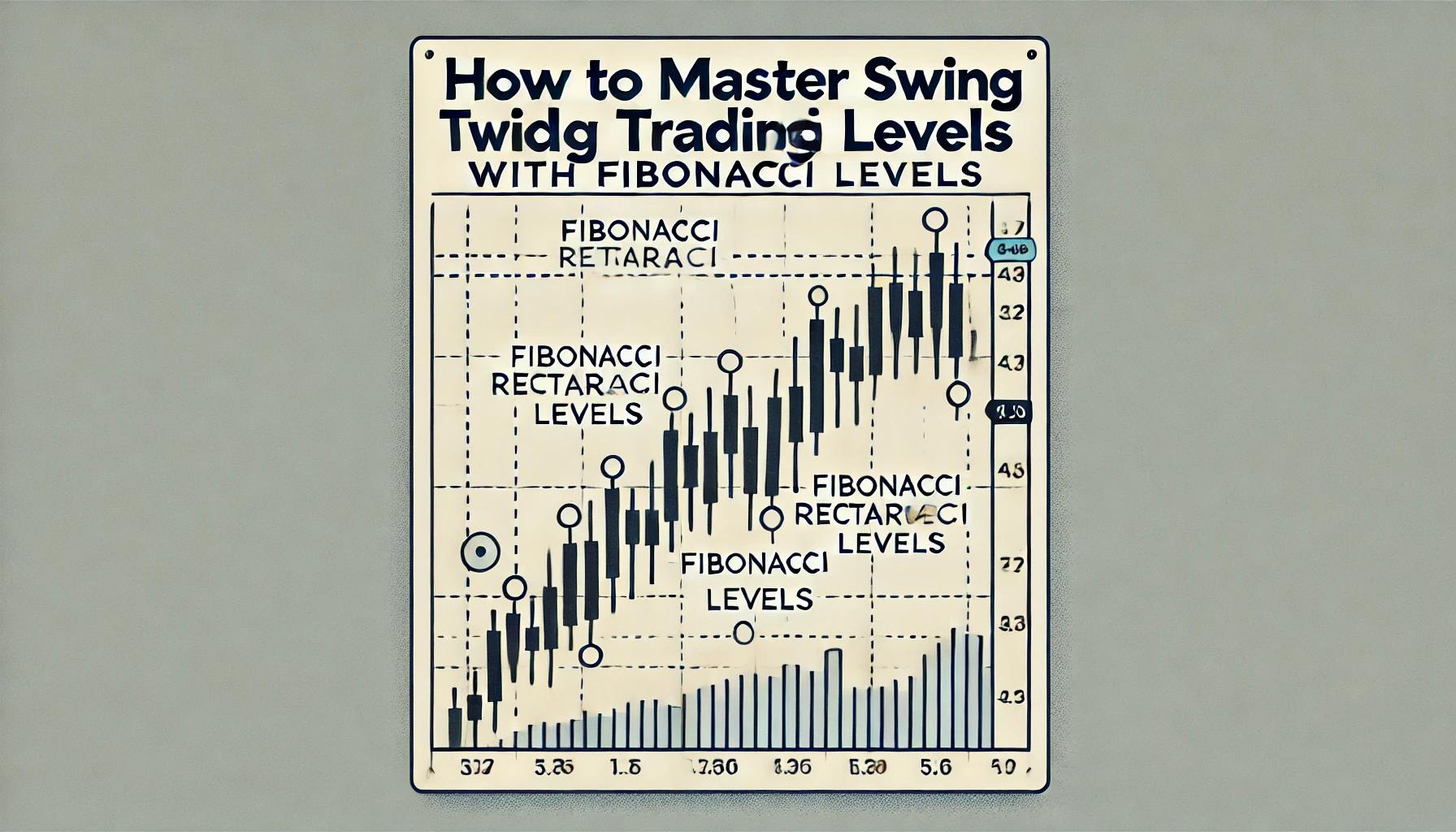Your cart is currently empty!
How to Master Swing Trading with Fibonacci Levels

Swing trading is a popular trading style that aims to capture short- to medium-term price movements within a trend. It typically involves holding positions for several days to weeks, allowing traders to profit from market swings. One of the most effective tools for swing trading is Fibonacci retracement levels, which help traders identify potential support and resistance areas where price reversals are likely to occur. By mastering Fibonacci levels, swing traders can make informed decisions about entry and exit points, maximize profits, and manage risk effectively.
This article will guide you through the process of mastering swing trading using Fibonacci levels, providing key insights into how to apply this powerful tool to your trading strategy.
1. What are Fibonacci Retracement Levels?
Fibonacci retracement levels are horizontal lines that indicate areas of potential support or resistance, based on the Fibonacci sequence. These levels are derived from the Fibonacci ratios of 23.6%, 38.2%, 50%, 61.8%, and 78.6%. Traders use these levels to predict how far a price might retrace before continuing in the direction of the trend.
For swing traders, Fibonacci levels provide valuable information on where a pullback may end and the trend may resume. The most commonly used levels in swing trading are 38.2%, 50%, and 61.8% retracements, as these levels often correspond to significant support or resistance.
2. Applying Fibonacci Levels in Swing Trading
a. Identifying the Trend
The first step in using Fibonacci levels for swing trading is to identify the prevailing trend. Fibonacci retracement works best in trending markets, as it helps traders identify pullbacks and potential reversal points within that trend. To identify the trend, traders can use moving averages, trendlines, or price action patterns to confirm whether the market is in an uptrend or downtrend.
b. Drawing Fibonacci Retracement Levels
Once the trend is identified, the next step is to draw the Fibonacci retracement levels. To do this, select a recent significant swing high and swing low within the trend:
- In an Uptrend: Draw the Fibonacci retracement from the swing low to the swing high.
- In a Downtrend: Draw the Fibonacci retracement from the swing high to the swing low.
The levels generated by the Fibonacci retracement tool will indicate potential areas where the price may pull back before resuming the trend. Swing traders look for price action signals around these levels to determine whether to enter a trade.
c. Using Fibonacci Levels for Entry and Exit Points
Fibonacci levels are particularly useful for identifying entry and exit points in swing trading. Traders typically look for price action to bounce off a key Fibonacci level, signaling a potential reversal. Here’s how you can use these levels effectively:
Entry Points: In an uptrend, if the price pulls back to the 38.2%, 50%, or 61.8% level and shows signs of reversal (such as a bullish candlestick pattern), it may present a buying opportunity. In a downtrend, a retracement to these levels may indicate a selling opportunity.
Exit Points: Swing traders can also use Fibonacci extensions, which are derived from Fibonacci ratios greater than 100%, to set profit targets. For example, the 127.2% and 161.8% extension levels can be used to determine potential areas where the price might face resistance and traders can lock in profits.
3. Combining Fibonacci with Other Indicators
To increase the reliability of Fibonacci levels, traders often combine them with other technical indicators or tools. Here are a few indicators that work well with Fibonacci retracements:
Moving Averages: Moving averages can help confirm the trend direction. When Fibonacci retracement levels align with a key moving average (such as the 50-day or 200-day MA), it increases the likelihood of a strong support or resistance area.
RSI (Relative Strength Index): The RSI can help confirm whether the market is overbought or oversold at a particular Fibonacci level. For example, if the price is retracing to a key Fibonacci level and the RSI is in the oversold zone, it may signal a buying opportunity.
Candlestick Patterns: Candlestick patterns such as doji, hammer, or engulfing patterns around Fibonacci levels provide additional confirmation for potential reversals.
4. Best Practices for Using Fibonacci Levels in Swing Trading
a. Wait for Confirmation
One of the most important aspects of using Fibonacci levels is waiting for confirmation. Simply seeing the price reach a Fibonacci level is not enough; traders should wait for price action to confirm that the level will hold as support or resistance. This could be in the form of a reversal candlestick pattern, an increase in volume, or a divergence in a momentum indicator.
b. Manage Risk with Stop-Loss Orders
Risk management is crucial in swing trading. When using Fibonacci levels, it’s important to place stop-loss orders below the Fibonacci level being used for entry in an uptrend, or above the level in a downtrend. This helps protect against unexpected price movements and limits potential losses.
c. Use Multiple Timeframes
Using multiple timeframes can enhance your analysis when applying Fibonacci levels. For example, if you identify a retracement level on a daily chart, switching to a shorter timeframe (such as 1-hour or 4-hour) can help you spot entry signals with more precision.
5. Example of Swing Trading with Fibonacci Levels
Consider an example of swing trading using Fibonacci levels in an uptrend. Suppose a trader identifies a swing low at $100 and a swing high at $150. The trader then draws the Fibonacci retracement from the low to the high, generating levels at 38.2% ($130), 50% ($125), and 61.8% ($120).
If the price pulls back to the 50% level ($125) and forms a bullish engulfing candlestick pattern, it could indicate a buying opportunity. The trader may enter the trade at $125, set a stop-loss below the 61.8% level at $118, and use a Fibonacci extension level (such as 127.2%) as a target, which might be around $165.
6. Conclusion: Mastering Fibonacci for Swing Trading Success
Fibonacci retracement levels are powerful tools for swing traders looking to identify potential reversal points within a trend. By mastering Fibonacci levels, traders can improve their ability to determine entry and exit points, manage risk, and enhance the probability of success in swing trading.
To effectively use Fibonacci levels, it’s important to combine them with other indicators, wait for price confirmation, and practice disciplined risk management. By integrating these practices into your swing trading strategy, you can take advantage of market swings and achieve consistent profits.

Mr. Rajeev Prakash
Rajeev is a well-known astrologer based in central India who has a deep understanding of both personal and mundane astrology. His team has been closely monitoring the movements of various global financial markets, including equities, precious metals, currency pairs, yields, and treasury bonds.
